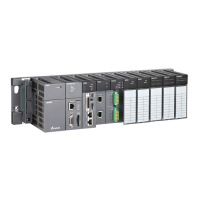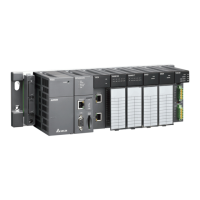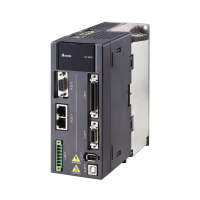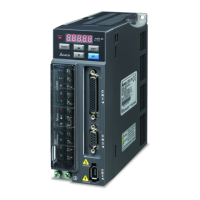AH500 Module Manual
6-2
6.1 Overview
The specifications for AH04TC-5A and AH08TC-5A, the operation, and the programming are
described in this chapter. AH04TC-5A and AH08TC-5A are temperature measurement modules.
They convert temperatures received from thermocouples into digital signals. Users can select the
degree Celsius or the degree Fahrenheit as a unit of measurement for temperature.
An introduction of thermocouples
The Seebeck effect is used in a thermocouple to measure a temperature difference. Generally
speaking, a thermocouple consists of two conductors of different materials that produce a voltage in
the vicinity of the point where the two conductors are in contact. The voltage produced is dependent
on the difference of temperature of the junction to other parts of those conductors, and is in the
range of several ten microvolts to several thousand microvolts. Therefore, the voltage produced
needs to be amplified.
A thermocouple creates a voltage when there is a temperature difference. When a differential
operation is performed on two pieces of data, external noise is eliminated. The stability of
thermocouples is better than thermistors, resistance thermometers, and thermal resistors. Therefore,
thermocouples are widely used in industry.
A thermocouple consists of a circuit having two wires of different metals or metal alloys welded
together or joined at both ends. One of the junctions—normally the cold junction—is maintained at a
known reference temperature, and the other junction is at the temperature to be sensed. A
temperature gradient across the junction of the wires gives rise to an electric potential by the
Seebeck effect. The voltage produced is proportional to the difference of temperature of the junction
to other parts of those conductors.
The voltage can be derived from:
(A)
where Q
A
and Q
B
are the thermopowers (Seebeck coefficient) of the metals A and B, and T
1
and T
2
are the temperatures of the two junctions.
In fact, Q
A
and Q
B
are almost unrelated to temperature. Therefore, formula (A) above can be
approximated as (B) below.
V=α(T
2
- T
1
) (B)
There are two types of thermocouple thermometers. They are wrapped thermocouples and bare
thermocouples. A wrapped thermocouple is wrapped in protective metal, and is similar to an electric
spoon in appearance. Wrapped thermocouples are used to measure temperature of liquid, and bare
thermocouples are used to measure temperature of gas.
6.1.1 Characteristics
(1) A sensor is selected according to practical application.
Type J thermocouples, type K thermocouples, type R thermocouples, type S thermocouples,
type T thermocouples, type E thermocouples, type N thermocouples, and ±150 mV voltage
inputs
(2) A module is selected according to practical application.
AH-04TC-5A: There are four channels. Inputs received by a channel are temperatures.

